|
Projects and
News
South Dakota
Quail Prairie is a small but very important remnant of the great tallgrass prairies which has been recognized for years as being one of incredible native diversity. A portion of the property that has never been plowed or grazed by livestock has tremendous plant diversity. Last year, an inventory of the plant diversity was started including a Floristic Quality Index which ranks the quality of the plants on a scale of 1 to 10, with 10 being the best. To date, 163 individual species have been identified and many of those are ranked 8, 9 or 10. Here is a sampling of Quail Prairie.

Jim Madsen, Northern Prairies’ field biologist out of Watertown, South Dakota spent many hours with the landowner helping her identify plants and taking hundreds of photos, and working to convince her that permanent protection of this jewel of a prairie was essential. In 2008, Quail Prairie was placed under a US Fish and Wildlife Service easement ensuring perpetual preservation. In addition to the plant inventory NPLT has worked with the Bramble Park Zoo’s youth program out of Watertown to sponsor field trips to Quail Prairie to get young kids interested in our native prairies and outdoor experiences.
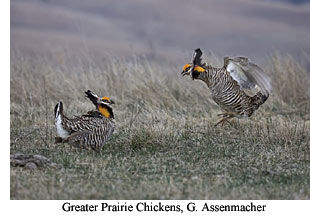
North American Wetlands Conservation Act Grants Coordinator
The North American Wetlands Conservation Act (NAWCA) has provided millions of dollars for preservation of wetlands and grasslands in South Dakota. However, the grant application process is extremely complex and it is estimated that a grant application takes approximately 400 hours and substantial expertise. Northern Prairies has teamed up with the South Dakota Department of Game Fish and Parks to secure the services of Tom Tornow, recently retired from the US Fish and Wildlife Service, to write NAWCA grants and secured the requisite matching funds.
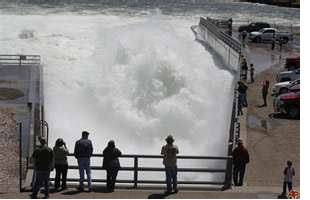
Northern Prairies Provides Public Presentations
In conjunction with the University of South Dakota, Missouri River Institute and the University of Sioux Falls, Northern Prairies sponsored a presentation recently on "The Missouri River Flood of 2011: Causes, Impacts, and Post芳lood Policy Decisions."
The presentation was given by Professor Tim Cowman of USD, who has extensively studied many aspects of the Missouri River and also spearheaded channel restoration on one of Northern Prairies' easements.
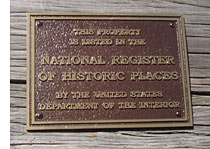
Professor Emeritus John H Davidson of the University of South Dakota Law School, and President of Northern Prairies, participated in the presentation on preservation and conservation easements entitled "The Land and Its People". Liz Almlie of the South Dakota Historic Preservation Office also provided the state perspective on preservation, and the presentation was sponsored by the Clay County Historical Preservation Commission. John Davidson's work was essential to completing the conservation easement on Jerry and Norma Wilson's historic property near Vermillion, South Dakota.
Landowner Incentive Program Summary
In July of 2004 Northern Prairies Land Trust opened its first South Dakota field office in Watertown. The financial support came through the Landowner Incentive Program (LIP), a US Fish and Wildlife Service program. The grant was sponsored by the SD Department of Game Fish and Parks, which also provided matching funds. From the start, creating partnerships and identifying Northern Prairies as a valuable conservation advocate were integral keys to the success of the program. Over the next 7.5 years we worked closely with many State and Federal agencies and a host of conservation organizations, developing and implementing individual projects with landowners and also but coordinating ideas and concepts with partners to bring innovative and wide scale conservation programs to the tallgrass prairie.
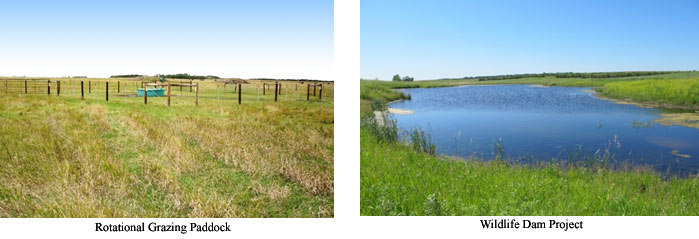
Northern Prairies contacted over 200 landowners and helped implement 250 individual projects. Included in the vast array of projects were shallow wildlife dams that doubled as stock watering ponds and wildlife habitat, rotational grazing systems that included water sources and paddock fencing, restoration of previously drained wetlands, re-establishment of native grasses and forbs, providing prescribed burns as a grazing management tool, assisting landowners with CRP enrollments and providing mechanisms for landowners to protect sensitive and unique landscapes through the use of long-term and perpetual conservation easements.
Nebraska
Nebraska Environmental Trust Projects
Eastern Cedars Thinning on Prairies
A major problem on the native prairie lands of Nebraska is the invasive Eastern Cedar. This tree was introduced because it is hardy and provides good cover in shelter belts. Unfortunately, it likes to spread out through the open prairie, crowding out native grasses and eliminating livestock forage. As shown in the two pictures below cedar trees can be successfully removed, allowing restoration of the native prairie plants. (Top picture is before, bottom is after.)


Restoring Oak Woodlands
A similar problem is occurring in the hills and draws of Nebraska where native Burr Oak trees are being crowded out by non-native invasive plants. Once again, the combination of human power and machines removes the invasive plants and allows the native species to flourish. (Top picture is before, bottom is after.)



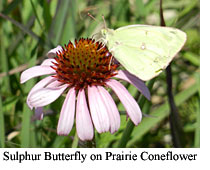
Using Conservation Easements to Preserve Native Habitat
We are hopeful that soon a new conservation easement will be protecting native prairie and woodlands in southeastern Nebraska. A combination of a landowner’s strong desire to preserve the land for future generations along with funding through the Nebraska Environmental Trust will preserve prime habitat and allow a working ranch to continue in an area of potential development.
Public Education and Meetings
Interacting with the public to provide information or new perspectives is an important part of starting and maintaining conservation programs. These interactions range from more formalized education meetings on important topics such as managing grasslands for wildlife habitat and livestock forage, to freestyle and innovative workshops to introduce new ideas. The photos below are from a workshop for educators designed to introduce new ideas to help get our younger generation back to the outdoors.
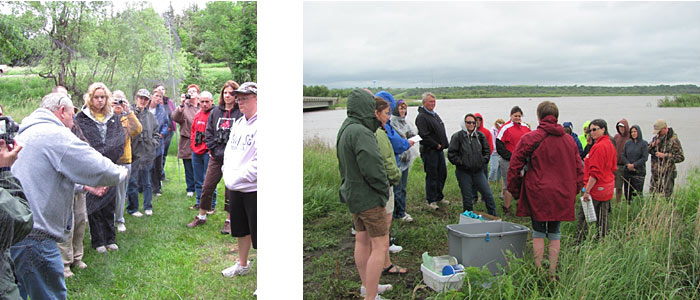
Prescribed Burns
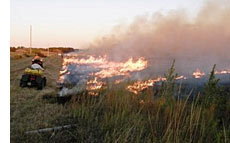 The use of prescribed burns to control invasive species in prairies and woodlands, and rejuvenate native plants has proven to be a valuable tool, and is increasing in use. While Northern Prairies does not conduct prescribed burns, we do assist landowners by helping them organize cooperatives so they can carry out the burns themselves and also by providing some of the tools necessary for the burn to be conducted safely and efficiently. Our office in Royal, Nebraska is in the process of putting together a "burn trailer" with all the supplies necessary for landowners to complete the prescribed burns. Our offices in Beatrice and Valentine have also been very active in providing workshops and equipment for landowners. The use of prescribed burns to control invasive species in prairies and woodlands, and rejuvenate native plants has proven to be a valuable tool, and is increasing in use. While Northern Prairies does not conduct prescribed burns, we do assist landowners by helping them organize cooperatives so they can carry out the burns themselves and also by providing some of the tools necessary for the burn to be conducted safely and efficiently. Our office in Royal, Nebraska is in the process of putting together a "burn trailer" with all the supplies necessary for landowners to complete the prescribed burns. Our offices in Beatrice and Valentine have also been very active in providing workshops and equipment for landowners.
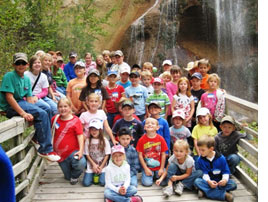
Moving On
Sandy Benson, Northern Prairies' Wildlife Biologist for a number of years in Valentine, NE has taken a new position with the Nebraska Forest Service. She will continue to work in the region employing conservation and habitat measures. Sandy will be remembered for her active role in engaging the general population in her work, especially schoolchildren. We wish her all the best.
|